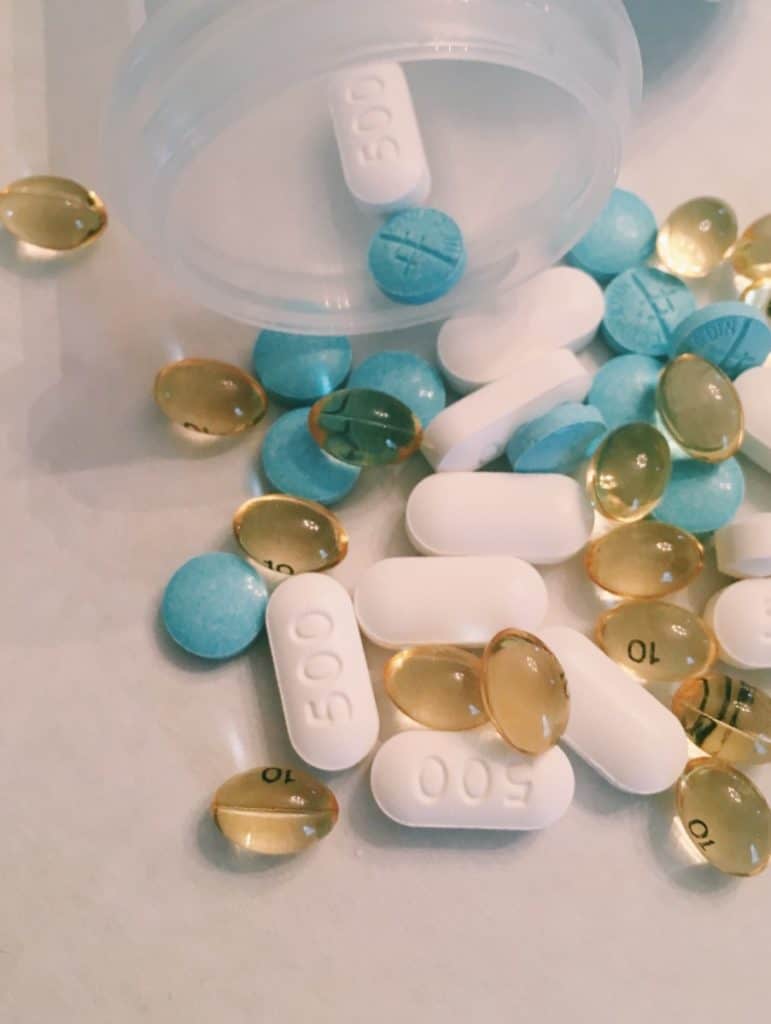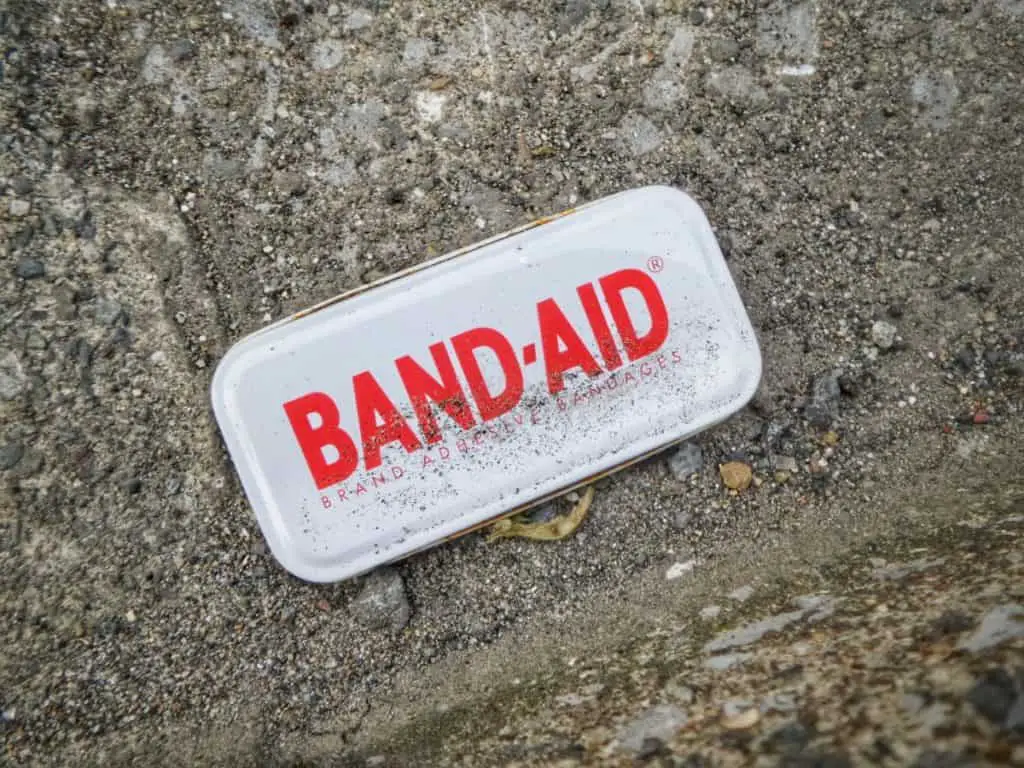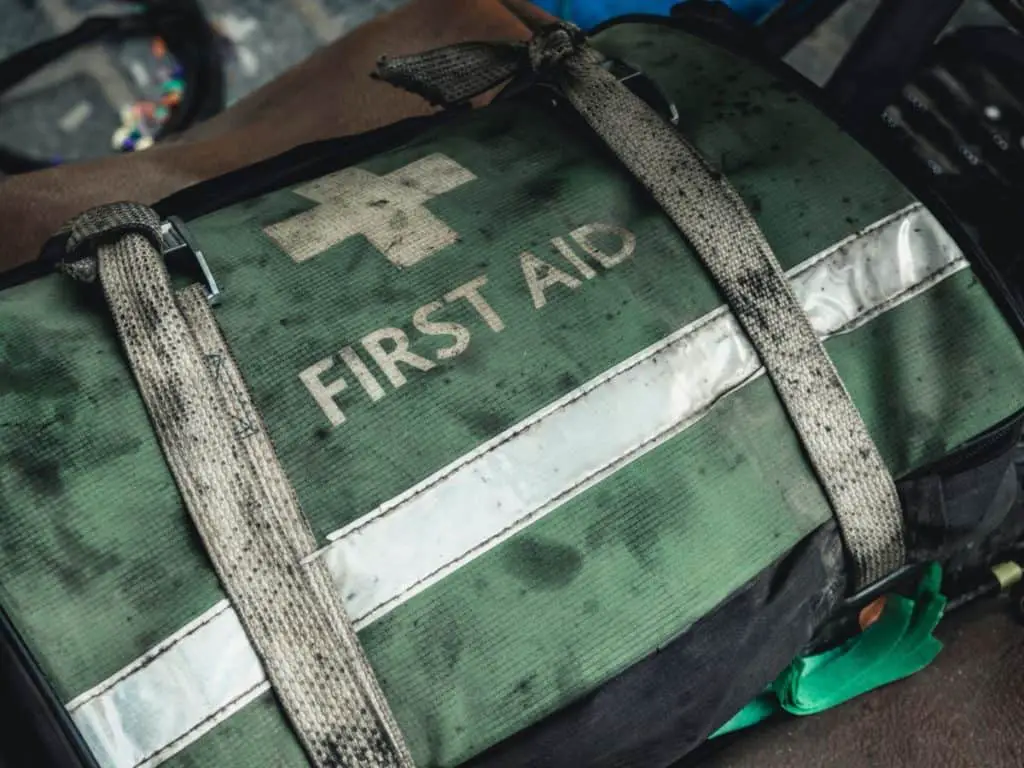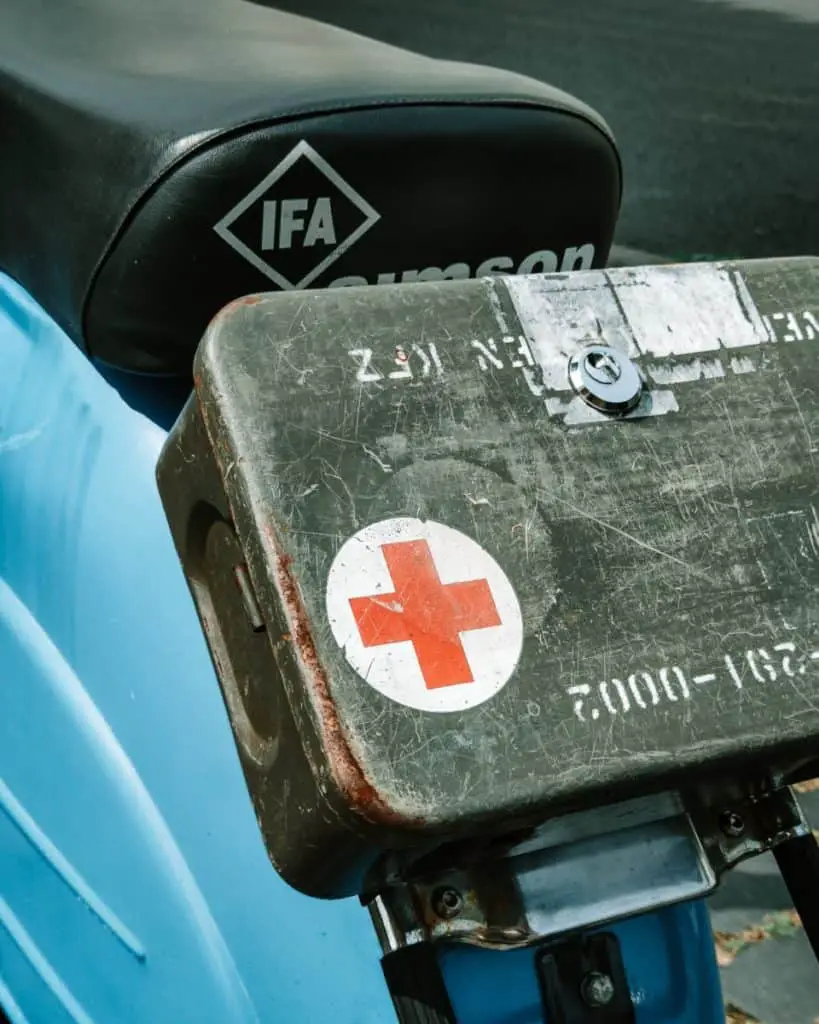First aid kits contain crucial equipment for medical emergencies in a wide range of situations. Whether you have an accident at home, work, or on a sports field, having first aid items easily accessible is crucial to avoid more extensive medical intervention. Having a kit is one thing, but making sure all the items included are functional is necessary for effective treatment.
Do first aid kits expire? First aid kits contain a large number of items that will expire, including medications, batteries, and adhesive materials. Most non-expired items should be checked for damage or rot that may occur over more extended periods and compromises the effectiveness of these items.
In this article, you will learn about the items you should pay particularly close attention to for expiration dates as well as how to best care for your first aid kit. Taking necessary safety precautions and consistently monitoring the contents of the kit is the best way to ensure you will have all the tools you need in the event of an emergency.
Can First Aid Kits Expire?
A first aid kit contains a wide variety of items that are meant to serve a range of uses for varying medical assistance. Many items in a first aid kit will be subject to expiration, while others are not as long as they are kept in good condition. Because many items in a first aid kit will expire, you should treat the kit as if everything will expire and regularly check every item in the kit.
Taking this vigilant standpoint will ensure that all of the equipment will be ready to use in the event of an emergency where functionality is imperative. It is recommended that you inspect your first aid kit every couple of months to double-check expiration dates and make replacements if necessary. Durable items should be examined at least once per year.
Most first aid kits that are assembled for you are designed to last 3 to 5 years from the manufacturing date. You will need to check the specific packaging of your kit to get a better estimate of what to expect for replacement time.
Expiring First Aid Kit Items
First, you should be aware of the items that will expire in a first aid kit and should be checked every few months to make sure the expiration dates have not passed. These are the main items you should be regularly checking in your kit. Durable items may also be susceptible to damage over time, so be sure not to overlook them during inspections.
These are the items that WILL expire in a first aid kit and should be replaced:

- Medications: Excluding certain prescriptions, most over the counter medications will last 1 to 2 years after the date they were manufactured.
- Bandages: Over time, the adhesive found on bandages and other first aid items will lose its stickiness. It is recommended to replace items with adhesive after 3 to 5 years unless stated otherwise on the packaging. You can open a bandage up to test the adhesive if you are unsure of how much time has passed.
- Batteries: They will show an expiration date or code on the individual battery. You can expect that this is a conservative date, so it will likely last longer. Battery quality will impact the date, and it is safest to change your batteries yearly. Test battery-operated items when you inspect the entire kit.
- Ointments: They may lose potency, especially if subject to heat in storage.
- Alcohol-based products: Rubbing alcohol and antiseptic materials may lose potency after expiration and not be as effective.
The FDA does not recommend using expired medication and other related items because their chemical composition may have changed. This can impact their effectiveness and strength, as well as put you at risk for other illnesses related to bacteria or changing chemical properties. While most drugs will still be effective beyond their expiration date, this is the date guaranteed for use.
Replacing expired medication is vital to avoid unlikely risks associated with compositional changes, but it is also essential to stay up to date on potential dosage changes or new instructions. Drug manufacturers may have changed the dosages or contents to more effective forms of treatment.
Checking Non-Expiring First Aid Kit Items
Many of the items in your first aid kit will not have an expiration date, but that does not mean that they cannot ‘expire.’ If not maintained or kept in suitable conditions, many items that are meant to last a long time can be compromised or deemed non-functional. Examining the packaging on durable items within a first aid kit is the best way to determine their usability.
You should deem first aid items as ‘expired’ or needing replacement if they appear to be contaminated or show any of these visible signs:
- Open packaging: If the packaging is opened for an item that requires sterilization, it must be replaced. The product is compromised and could have been exposed to contaminants that should not be used on wounds.
- Discoloration: If you notice discoloration, this could be the result of something spilling on the packaging, water damage, or oxidation. All of these will negatively impact the quality of the seal on packages or simply suggest they have been out of use for a long time.
- Rust or corrosion: Metal objects, including scissors and tweezers, may have been exposed to moisture. This can damage tools and encourage the growth of bacteria that causes tetanus.
- Rips or holes: Any item with damage to the packaging should be replaced. This includes rubber gloves and wrapping materials.
If you do not notice any of these visible signs of wear and tear, or there is no expiration date, you do not need to replace the item.
Emergency Supplies You Should Have in a First Aid Kit
While understanding the expiration and replacement of individual items is crucial, having a checklist of all items to include in your first aid kit will keep you prepared in the event of accidents.
Make sure your first aid kit is equipped with this (extensive) list of items:

- Medication: This may include personal medications, antihistamines for allergies, and pain medications (ibuprofen or aspirin). Include enough as seen fit for the number of people the kit serves.
- Ointment: For topical treatments, look to include antibiotic ointments (to protect cuts), aloe vera (for burns), and corticosteroids (rashes and inflammation).
- Antiseptic wipes/spray: These are typically applied to cuts to keep away bacteria before applying a bandage or to keep a wound clean.
- Bandages: Include adhesive bandages in a variety of sizes to cover various cuts and abrasions. Elastic bandages are also critical for sprains to decrease swelling and pain with increased pressure.
- Safety pins: If elastic bandages do not include clips, safety pins will hold them in place.
- Gauze: You should keep both sterile and non-sterile gauze pads in the kit, with sterile ones being designed to fight bacteria and used for open wounds. Non-sterile gauze provides extra support or cushioning on a closed wound or painful area.
- Cold compresses: Aimed to reduce pain or swelling, instant ice packs are excellent additions to a kit. They can also be applied to manage fevers.
- Gloves: To maintain a sterile environment when working directly with a wound, gloves (preferably non-latex due to potential allergies) should be included.
- Cloth tape: This tape keeps bandages and gauze in place while maintaining flexibility and durability.
- Tweezers: For anything that cannot be manipulated with your fingers, tweezers are excellent tools. They are most applicable for removing foreign objects from skin or keeping items clean.
- Scissors: Many items mentioned above for dressing wounds will require cutting for proper sizing and opening.
- Thermometer: Your first aid kit is the best place to keep medical equipment for checking temperatures.
- Flashlight: In the event of a power outage or the need for medical attention in poorly lit areas, flashlights should always be included.
Additional items you may add will depend on individual needs or applications in various environments. You will want to cater your first aid kit to the specific activities you do and the risks associated with them. For example, a sports first aid kit may require more instant ice packs, aerosol cold sprays, or pain relief medications than an at-home kit.
Home kits may also include different items than one on the go, especially in remote locations when a drug store may not be accessible. Preparing for all situations will benefit users in emergencies. All of these items should be checked regularly to firstly make sure they have not been used up or have expired, both situations requiring replacement.
Note: Be aware that workplace first aid kits must meet specific OSHA requirements and should be followed if you are an employer.
Safety Tips for Using a First Aid Kit: Do’s and Don’ts
There are plenty of ‘do’s and don’ts’ when it comes to purchasing and using emergency supplies. Having a first aid kit is helpful, but knowing how to use it is imperative. The following are some safety tips for you to follow to use your kit most effectively and make sure you are prepared in the event of an emergency.

- DO: Use A Durable and Waterproof Case
The case that the first aid materials are kept in is an important consideration when compiling these items together. The container that is used should be large enough to fit all necessary materials as well as durable enough to keep items inside both intact and safe. It is recommended to use hard cases that are waterproof to protect against impact and moisture.
A strong hard-shelled case will prevent any foreign objects from puncturing the bag or coming into contact with items that may tear or break upon collision. If the container is dropped, it should remain intact or at least break while keeping the items inside safe. Most first aid kits will come in a reliable container or case, but this should be double-checked.
Not only does the material of the case protect from physical damage, but a properly sealed case will also limit contact with moisture and contaminants, which happens over extended periods. You may also consider a see-through case so you can watch for moisture accumulation and have easy access to needed items. Just be sure to store away from sunlight.
- DO: Check or Mark Expiration Dates
If there’s any takeaway from this article so far, it’s that first aid kit items do expire, and they need to be monitored regularly. It must be reiterated how important it is to check not only expiration dates on items but also the conditions of other items that do not typically ‘go bad.’ This ensures all your tools are ready to use when you need them unexpectedly.
Because most people don’t usually keep their first aid kits out and visible from day to day, it can become easy to forget about them. Consider setting a reminder for yourself to check them at whatever time interval makes the most sense based on the age of your kit.
Some effective strategies for reminding yourself include:
- Visual reminders: Writing it down on a calendar, a post-it note on your board or some other place you check often can provide you with little reminders as to when you should be going through your kit.
- Phone reminders: Set an alarm on your phone for certain days of the year to check the kit. This is easy enough to set, and it can be done so on reoccurring intervals, so you’ll never miss it.
- Daylight saving: Just as you need to change your clocks, you can also check your first aid kit twice a year on the same day.
- Significant days: If there are other significant days of the year that repeat, you can assign first aid kit checks to these days as well.
Creating these shortcuts makes it easier for us to remember one of the most critical steps in first aid protocol – having the proper tools ready to use.
- DO: Replace Items Immediately After Use
First aid kit items not only need to be replaced when they expire but more importantly, they should be replaced after use. This is especially true of items that are not kept in high quantity. Using one bandage will not require purchasing a new package, but finishing the last of medication or breaking an instant ice pack that cannot be reused will require replenishment.
After an incident, it can be easy to put the kit away without refilling the items that were used. It is recommended to either put that item directly onto a shopping list or stock up on certain things where you can easily replace them, especially if it is an item you may need more than others. Storing extras at home makes it easy to put them into the kit after use.
Drug stores and most grocery stores will sell all of the individual items that you can add to a first aid kit. You do not have to purchase an entirely new kit if yours still has multiple items that are still fit for use.
- DO: Test Working Condition of Items
Multiple items within the kit can be tested and used to make sure they are still working. These are typically electronic or mechanical devices that are necessary for aiding in emergencies. Essential electronic or mechanical items that most people should have in their kit are a flashlight and thermometer.
Turn both items on and off to make sure batteries are still running every time you check your kit. You should also keep some extra batteries in the kit in case one of your electronic devices is not working. You may also consider testing your scissors as they have been sitting in a closed position for a more extended period.
- DO: Keep First Aid Kit in a Safe and Accessible Place
The ideal storage conditions for a first aid kit are cool and dark places out of direct sunlight. This regulates temperatures that may impact medications and ointments kept in the kit as well as moisture levels. Keeping a kit in a cupboard that satisfies these conditions and is easily accessible will be crucial for lasting effectiveness.
If you do choose to travel with a first aid kit or keep one in your car, it can be difficult to regulate temperatures as cars can get very hot. The key here is to keep it stored away from direct sunlight and near the floor. If you can cover the kit with insulation, this is the best way to regulate temperature. Placing them under a seat is often a good idea.
You want to make sure that you and your family members always know where the first aid kit is in the event of an emergency. The kit should be easy to get to as time is a crucial factor in responding to medical emergencies. At the same time, the kit should not be so accessible that small children can easily open them, especially with medications or sharp objects inside.
Like most medications in the home, these kits should be kept at heights that small children will not be able to reach or have access to. Kitchens and bathrooms are great storage spots because they are convenient, and often where many accidents occur.
- DO: Have Multiple First Aid Kits
It is a good idea to have multiple first aid kits so that you always have emergency supplies accessible to you. The American Red Cross recommends keeping kits both at home and in your car. Keeping a kit in your car is especially important if you are in areas where quick access to medical care or a drug store is not feasible.
First aid kits should be put back in the car after use so that they can easily be brought with you as you travel. If you are planning on engaging in an outdoor activity, having a first aid kit on you is a very safe preventative measure. This is especially true in remote locations where you may travel considerable distances from your car, such as while hiking.
Athletic teams will have first aid kits available at a field, frequently provided by a trainer. These are made to address minor accidents as well as more substantial sports-related injuries that can be addressed directly on site.
- DON’T: Use Damaged or Tampered Items
If an item in your first aid kit looks like it has been used or damaged, do not use it. This is most important when addressing open wounds. You should not use open items because their ability to serve as sterilized tools has been compromised. You should replace these items with new ones to avoid any dangers that could be caused by using faulty supplies.
Using damaged equipment, especially sharp objects, also presents risks for greater injury or misuse. These items can be dangerous to have in the kit even when not being used for medical intervention.
- DON’T: Items to Avoid Keeping in Your Kit
You now know of plenty of items you should keep in your kit, but some things do not belong. These items should be left out of first aid kits because they are either dangerous or should be administered by a doctor:
- Activated charcoals or ipecac: These are used to help children throw up when exposed to poison. You should not use them (especially ipecac) because they may not be effective in eliminating the poison. Call Poison Control immediately if you suspect poisoning.
- Lighters/fire: Especially when keeping alcoholic products in your kit, having a fire source (especially an automatic one) can be dangerous and could lead to an explosion.
- Knives: With sharp scissors already accessible, knives can be dangerous, especially if the kit is accessed by children.
Only the necessary items and tools should be kept in a first aid kit. Avoid sharp objects and those that could be fire hazards or dangerous chemicals.
- DON’T: Overlook First Aid Protocol or Instructions
A first aid kit needs to have essential tools, but it must also include instructions on what to do and how to use them. Keeping people safe will require you to remain calm and follow directions. Consider reviewing first aid guidelines each time you check the expiration dates of items in your kit.
Pre-made kits will likely have instructions as to what to do in the event of different medical emergencies. Following these instructions is crucial to keep the injured person safe. If you do not have instructions, you can use an online resource. Print these instructions and place them in the first aid kit for future use.
It is also a good idea to have a list of phone numbers and contact information for medical services in the area. These resources include (but are not limited to):
- Emergency (911)
- Local police or fire department
- Poison Control Center
- Primary care physician
Review all safety steps and requirements when using a first aid kit to keep the injured person and yourself safe. Following set instructions will also help to keep you calm and make better decisions in a stressful environment if you are needed to intervene. Keep these instructions easily accessible within the kit for anyone to use upon opening.
- DON’T: Ignore the Need for Greater Medical Intervention
A first aid kit is the first step in providing solutions for common injuries or helping to delay further problems in the event of a more significant injury. However, it is essential to remember that a first aid kit is not the solution to every problem and should not be relied upon solely to keep people safe.
If there is a more emergent medical situation that requires professional care, emergency medical professionals must be called immediately. You can do your part in helping to slow down injuries from escalating, but medical teams should be called, especially if first aid measures are not helping. This will ensure that the injured person is treated as quickly as possible.
Keeping emergency contact information handy is critical for times when more considerable medical attention is required.
Keeping Your First Aid Kit From Expiring

First aid kits have the potential to solve a variety of medical problems and injuries that come up in your daily life. The successful interventions from a kit are ones that hold ready-to-use equipment. To ensure your first aid kit is most effective, make sure all items inside are not expired or damaged.
The best way to keep items from expiring is to check them regularly for expiration dates and to store the kit in a dry and safe place. Avoiding contact with sunlight and moisture will improve the quality of the items inside and provide a longer shelf life, especially for the items that may be susceptible to water damage or risk contamination that will void sterilization.
By following the proper protocol laid out by medical professionals and this article, first aid kits are necessary tools to keep at home, work, and in your car as the first line of defense for medical emergencies.
